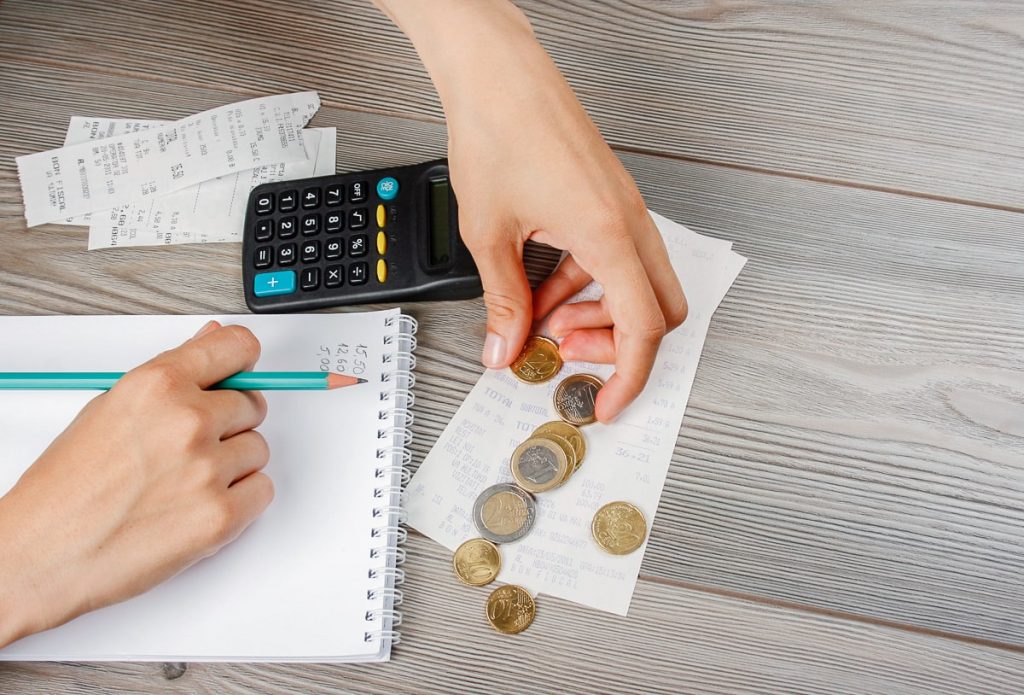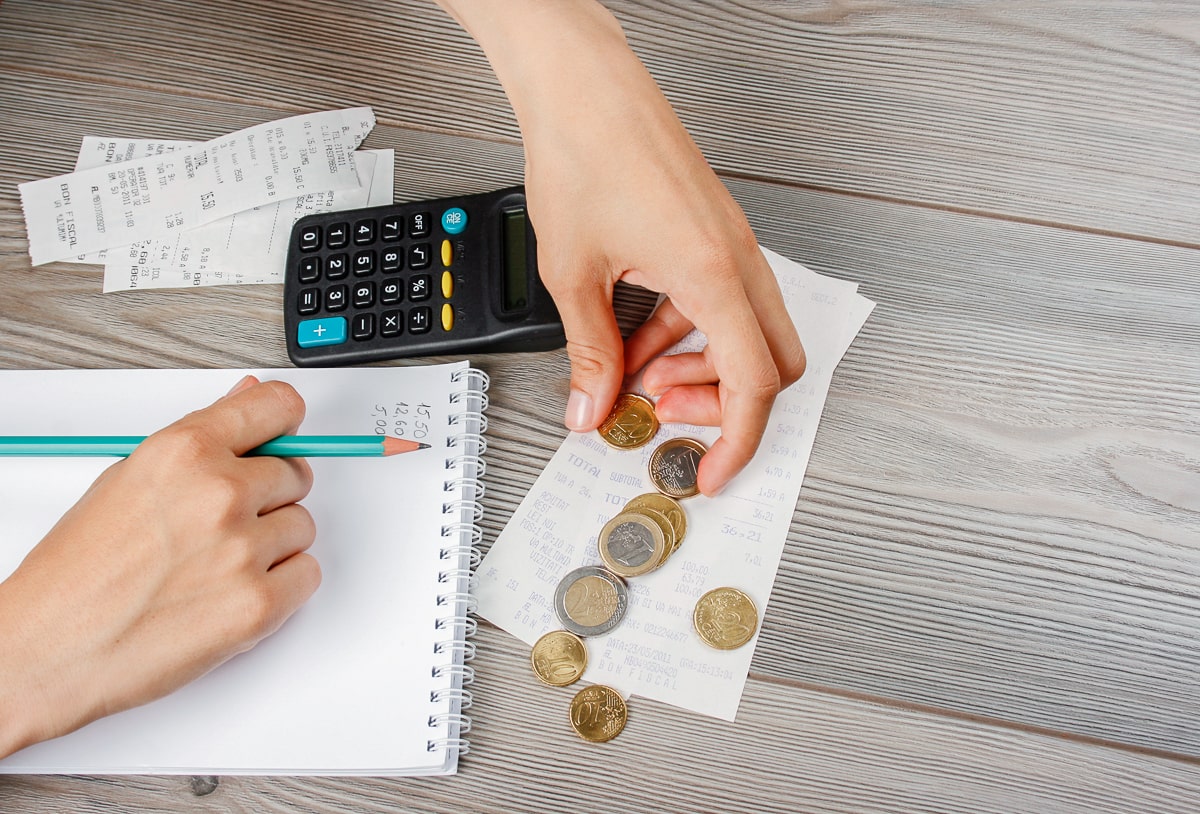Wondering How to Budget? These Budgeting Methods Might Work for You!
If you are trying to get a handle on your money, you are definitely not alone! In such uncertain times, keeping track of every cent can be a big deal.
That’s where personal budgeting methods might come in. There are a number of great techniques and strategies that you can adopt right away to make simple changes to how you look at and manage your money!
As a household, we are definitely aware of our financial situation: how much we have, how we are spending it, what we are saving each month, and how that will grow/change over time.
It’s good to have money put away for when times get tough – because wishing for a “rainy day” fund is no good when it’s too late! This is where budgeting comes in.
It can be difficult to figure out how to budget when you’re completely unfamiliar with it. The news is that there are lots of different budgeting methods that can provide a framework for you to understand and follow!
Table of Contents
Why Worry About Budgeting?
There are quite a few reasons why you should budget – the obvious ones being: to avoid getting into debt, paying off debt, and/or saving money. It is very difficult to do any of these things when you don’t know what your financial situation looks like.
Keeping an eye on your finances – and budgeting specifically – can help you determine how much money is coming in and going out every month.
By tracking your expenses you know exactly where that money is going. That makes it easier to figure out what you can change to reach your financial goals.
There are quite a few other benefits of budgeting that we have talked about in a separate article. So if you need more convincing that budgeting is actually worth the time, then go read that article and come back here after!
How To Find A Budgeting Method That Works For You

In order to find a budgeting method that works for you, you need to consider a few things. First, you need to think about your goals.
Are you looking for a budgeting method that you can implement long-term or are you budgeting for the short-term?
If you’re in it for the long term, then you need to find a budgeting method that you can stick to for longer than a few weeks. There is no point in getting used to a method and then slacking off after a month or two.
At the same time, you also need to take into account what kind of person you are. Are you very detailed-oriented and like working with numbers? Then the traditional budgeting method might be a great choice for you.
Are you a busy person and want to spend very little time thinking about budgeting? Then maybe the “pay yourself first” or envelope method might be a better fit for you.
You can always try out different budgeting methods to find one that works well for you. However, when one method just really doesn’t work for you – don’t try to force it.
The likelihood of you sticking to it long-term is very low and there are lots of other methods that you could try instead. And if there isn’t one, then you can always make up on your own!
Popular Budgeting Methods

There are lots of budgeting methods out there but we’ll focus on some of the most popular ones that work well for most people.
If you like the idea behind one of these methods but it doesn’t fully work for you, then you can always make some tweaks to it and adapt it to your unique situation.
Pay Yourself First (80/20 Method)
This budgeting method is very simple compared to some of the other methods further down. It works like this: From any money you make, you take 20% of it and put it into savings right away. The rest of the money you can spend without having any budget restrictions.
By not having the 20% readily available in your account, you can trick yourself into thinking that it never existed (while hopefully gaining interest in a savings or investment account). And by not having easy access to that money, you can’t spend it either.
If your income allows for it – or you can keep your expenses low – ideally you save more than just 20% of your income. This should be a priority if you haven’t created an emergency fund yet because you never know when you have unexpected expenses.
We like this budgeting method because it makes saving money every month a priority. And we believe that it’s true that it’s easier to save money when you act like it was never supposed to be kept in your checking account/main account anyway.
Traditional Budgeting Method
The traditional budgeting method is probably what you first think of when budgeting comes to mind – and to be honest, it’s one of the more time-consuming methods.
The way it usually works is to write down all your income and all of your expenses. Ideally, you group similar expenses together in categories to make it easier for yourself later.
These categories could be groceries, house, gas, entertainment, subscriptions, etc. You can be flexible with that but try not to be too broad.
The second step includes determining the amount of money per category you are okay with spending every month. It’s important that these goals are realistic.
If these goals are almost impossible to reach in practice then you’re more likely to give up on budgeting again soon since it appears to “not be working”.
At the same time, the money amount shouldn’t be too high – especially when it’s your goal to save some money and/or pay off debt.
We like that with this budgeting method you get a good overview of your financial situation. However, we slightly dislike that putting money away in savings is not as prominent as with other budgeting methods.
With this method, you really only save money that is left over. We also understand that not everyone is in a situation where they can put a lot of extra money into savings – so you’ll have to make that decision based on your circumstances!
Envelope Budgeting
If you need a budgeting method that holds yourself accountable but you’re not good with spreadsheets, then the envelope system might be for you.
The set-up is pretty straightforward. At the beginning of your budgeting period (could be the beginning of every month or every two weeks etc.), you take some envelopes – yes, the ones you use to send letters – and write the categories on the front. Then you take your cash and allocate it to the different categories.
For the duration of your budgeting period, you can only use the money in the corresponding envelope of your expenses. If there’s no money left, you can’t spend any more money in that category until the end of the period.
We like how easy this budgeting method is – and how tangible it feels since you can only spend the money that you actually have in the envelopes.
The problem we see with this budgeting method is that it doesn’t work that well for people who usually pay for their purchases with a debit or credit card.
If you want this method to be successful, then you’d have to stop paying by card and only use your envelope cash. In practice, this might be difficult to accomplish but it might be worth a shot for you!
50/30/20 Budget
The 50/30/20 budgeting method feels a little bit like a simplified version of the traditional budgeting method.
However, instead of having many different categories and setting amounts for each category, with this method you only have three. These categories are “needs”, “wants”, and “savings”.
Having a pre-determined percentage makes distributing the money easy:
- 50% of your monthly income is supposed to be for expenses in the “needs” category such as essential groceries, electricity, rent/mortgage, etc.
- 30% of your income is supposed to be for “wants”. This could be a bottle of wine, a chocolate bar, or the more expensive cellphone plan that you wanted to have but didn’t need.
- The last 20% of your income should be put into savings. We’d recommend that you do this right when the money comes in so you’re not tempted to spend more money than the allocated amount in the other two categories.
With this budgeting method, we see both positives and negatives. It is very easy to get started since you just have to follow the rules. That makes it a great method to try if you’re completely new to budgeting.
At the same time, having the allocation of your income pre-determined can be challenging since your situation might be more unique than others.
Zero-Based Budget
Similarly to the traditional budgeting method, the zero-based budget is great for people who are detail-oriented and like to plan everything out deliberately.
By using this method, you’ll also track your expenses more strictly than you might do when using methods like the 80/20 method.
With the zero-based budget, every incoming dollar needs to “have a job” and be allocated to something specific. That could be buying groceries, saving for a specific purchase, etc. – the important part is that you know where it is supposed to go.
That is the difference compared to the traditional method mentioned above. With that method, it’s fine to have some unaccounted or “left-over” money at the end of the month – with the zero-based budget it is not.
The important part with this budgeting method is to track all your expenses and transfers to saving accounts, etc. to make sure that at the end of the month you did actually give all your money a “job”.
The nice thing about this method is that you get a very good overview of your financial situation – but at the same time, it is also very strict.
We don’t have a big problem with sometimes leaving some money in our checking account at the end of the month – so this method would not work perfectly for us.
And there you have it – a breakdown of how to budget and a few budgeting methods you can try out!
In the end, there is no single great method for successful budgeting – they all differ and work for different types of people and their financial mindset. Best of luck budgeting – let us know about your journey and how it goes over time!
As always, Stay Curious,
-B&L
Pin it for later!


